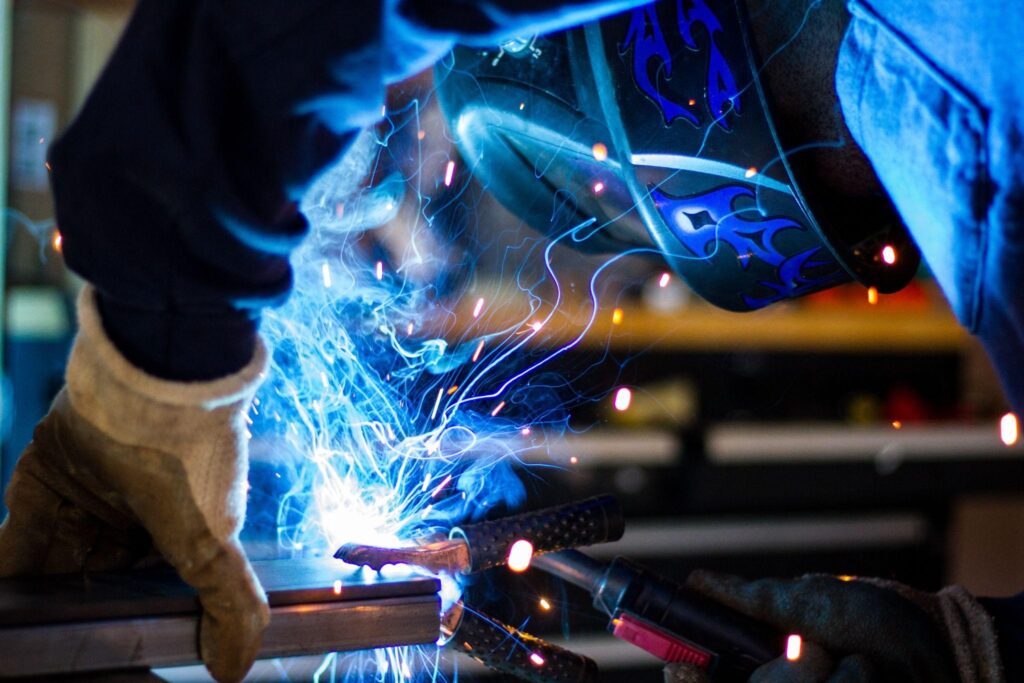
Polyethylene (PE) is a popular material for various applications due to its durability, flexibility, and resistance to chemicals and UV radiation. In particular, it is widely used in the construction industry for applications such as piping systems, storage tanks, and geomembranes. However, to ensure the best results and longevity of the project, it is crucial to choose the right welding technique for the job. In this article, we will discuss some of the most common poly welding techniques and help you decide which method is best for your project.
Butt Fusion Welding
Butt fusion welding is a widely used technique for joining two pieces of PE pipes or fittings. It involves heating the ends of the pipes or fittings to their melting point and then pressing them together to create a homogenous joint. This method is suitable for pipes and fittings with the same diameter and wall thickness and can produce strong and leak-proof joints.
Butt fusion welding is commonly used in the water and gas industries, where reliable and durable piping systems are essential. It is also suitable for applications requiring high-integrity joints, such as those in the chemical industry. However, it requires specialized equipment and trained personnel, and may not be suitable for small-scale projects or those with tight budget constraints.
Electrofusion Welding
Electrofusion welding is another technique used to join PE pipes and fittings. It involves placing an electrofusion fitting between two pipes and then using an electric current to melt the PE material and fuse the joint. This method is suitable for pipes with different diameters and wall thicknesses and can produce strong and durable joints.
Electrofusion welding is commonly used in the water and gas industries, as well as in industrial applications where joints with high integrity are required. It is also suitable for small-scale projects, as it requires minimal equipment and can be performed by a single operator. However, it may not be suitable for applications where the pipes or fittings are exposed to high stresses or temperatures.
Extrusion Welding
Extrusion welding is a technique used to join PE sheets, pipes, and fittings by melting and fusing the material together. It involves heating the PE material with a hot air gun and then extruding a molten bead of material onto the joint. This method is suitable for repairing damaged or cracked pipes and fittings, as well as for joining large sheets of PE material.
Extrusion welding is commonly used in the construction industry, particularly in the installation of geomembranes and other lining systems. It is also suitable for repairing or modifying existing piping systems. However, it requires specialized equipment and trained personnel, and may not be ideal for small-scale projects or those with tight budget constraints.
Socket Fusion Welding
Socket fusion welding is a technique used to join PE pipes and fittings with smaller diameters. It involves heating the socket of the fitting and the end of the pipe to their melting point and then inserting the pipe into the socket to create a joint. This method is suitable for pipes and fittings with diameters up to 4 inches and can produce solid and leak-proof joints.
Socket fusion welding is commonly used in the plumbing and HVAC industries, as well as in small-scale projects where cost and equipment constraints are a concern. It is also suitable for applications where the pipes or fittings are exposed to low stresses or temperatures. However, it may not be suitable for applications that require joints with high integrity or large diameters.
Hot Gas Welding
Hot gas welding is a technique used to join PE sheets and other flat surfaces. It involves heating the surfaces with a hot air gun and then pressing them together to fuse the material. This method is suitable for applications such as lining systems, tanks, and other flat surfaces.
Hot gas welding is commonly used in the construction industry, particularly for the installation of geomembranes. It is also suitable for applications where large flat surfaces need to be joined. However, it requires specialized equipment and trained personnel, and may not be suitable for small-scale projects or those with tight budget constraints.
One advantage of hot gas welding is that it can produce strong and leak-proof joints, even in harsh environmental conditions. Additionally, it can be used to repair damaged or cracked PE surfaces, as well as to modify existing structures. However, it may not be suitable for applications that require joints with high precision or tight tolerances. Overall, hot gas welding can be a reliable and effective poly welding technique for certain types of projects.
Conclusion
In conclusion, the choice of poly welding technique depends on several factors, including the type of application, the size and diameter of the pipes or fittings, and the budget and equipment constraints. It is important to consult with a qualified and experienced welding professional to determine the best method for your project and to ensure that the joints are strong and durable.